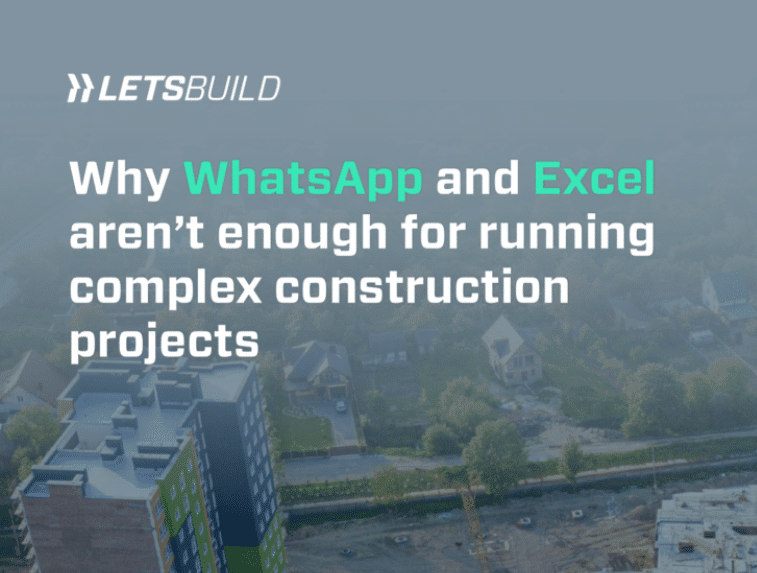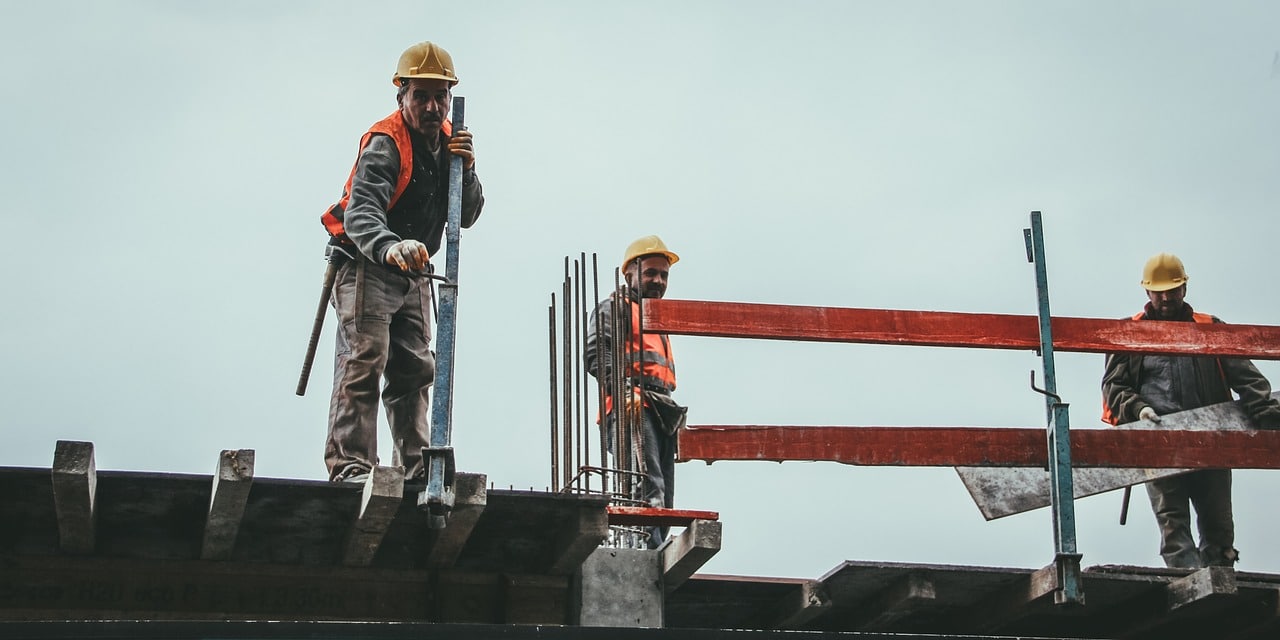How many times have you driven to the construction site full of frustration because you had to attend yet another progress meeting that you know won’t lead anywhere? And how many times have you left the room after a meeting, feeling even more disoriented and disheartened than before?
Free ebook: Why WhatsApp and Excel aren’t enough for running complex construction projects
Well, you are not alone. Site meetings are a constant source of frustration for many project managers around the world. Regardless of the type or the size of the project, this problem is almost always there.
That being said, it comes as no surprise that project managers spend over 6 hours a week creating and maintaining different schedules in an effort to stay on track of everything that is happening on site and ensure that progress meetings can bring value to the team instead of generating confusion.
But seeing everything on the field should never be synonymous with so much administrative work. Using 40% of your time on site in making phone calls and writing reports that are outdated the moment they are issued can’t be the answer to unproductive meetings. On the contrary, it will gradually create even more problems. For example, it will pave the way for a lot of mistrust between the different teams and eventually fuel a toxic culture of blame.
The good news is that it doesn’t have to be like this anymore. There are ways to turn these long meetings into an opportunity for the entire project team to exchange ideas, discuss their next steps, and address critical issues before they expand out of proportion.
This is where digitalisation comes into the picture. More specifically, this is where it becomes evident how important it is to implement construction-specific tools in your projects. Many stakeholders in construction rely on WhatsApp, Excel, or email for their communication but in a construction site that can be a problem. It doesn’t mean that these tools aren’t good. There is a reason so many people use them on a daily basis.
However, they aren’t enough for managing complex construction projects where all updates from the site should be instantly reflected on all the different schedules that a project manager and his/her teams are working on. In any other case, miscommunication or costly claims might wait just around the corner.
You can also understand then why construction progress meetings can be so admin heavy and cumbersome to manage or just attend. It is because most participants lack a clear and live view of what’s happening on site and what are the next big stones they need to tackle.
Knowing this, people show up in the meeting with no expectations and sometimes even unprepared. As a result, miscommunication becomes even worse, and more problems arise as the weeks and the months pass.
5 steps to productive and admin-free meetings
Now that we put the problem under the spotlight, it’s time for solutions. Without further ado, here are the 5 steps that could allow you and your team to hold construction progress meetings that are efficient and free from excessive administrative workload:
1. Use tools that are tailored for construction
We can’t stress enough how essential it is to implement in your projects digital tools that are construction specific. It is the cornerstone of increasing site visibility and, by extension, reducing delays and budget overruns. The higher clarity you have on your project the fewer mistakes and critical issues will appear.
More importantly, by connecting everything that is taking place on the site directly with your master and short-term schedule you avoid getting drowned in time-consuming administrative tasks.
All these things that we just mentioned reflect also on the quality of your site meetings and have a direct effect on how much time you need to spend every week in order to be prepared for these meetings. Simply put, site visibility can increase the quality of your construction progress meetings and hold everyone accountable in case they come unprepared.
2. Trust a single source of truth
Fragmented communication is another factor that can make site meetings a nightmare and is directly linked to the absence of a construction-specific project management tool. Instead of jumping from one document or call to another, you need to gather all your project communication in a single data source.
In that way, all involved parties can access the information that is relevant to them and make informed decisions without being dependent on anyone else. Furthermore, you should never forget that a single source of truth is also a single source of proof. When everyone is working in the same context, it becomes much easier for you to hold people accountable when a problem arises.
In the same sense, using a single source of information can make your progress meetings much more productive as all teams will have a clear understanding of what are their responsibilities and what they need to report on every week. Especially today where many teams have to meet remotely, that’s extremely valuable.
3. Connect your project schedules
In the introductory part of this post, we mentioned that project managers use more than 6 hours a week trying to create and maintain different schedules so that they can stay on track of everything that is happening on site. That’s simply not good enough and can affect the quality of your site meetings, as well.
Read more: How to see everything without getting buried in admin work
This is why integrated planning is so important. Having a tool that allows you to connect all of your schedules (e.g. master schedule, procurement schedule, 3-6 week lookaheads, etc) will provide you with a clear overview of your entire project and a better understanding of where you need to focus your attention each day. And the best part is that you can gain that unique site visibility without having to jump from one document to another or having to contact a ton of people.
By integrating your different plans, you have a unique opportunity to let some of your admin workload go away, and at the same time, you open the path for more efficient construction progress meetings as you will have a clear picture of what needs to be discussed next.
4. Make your meetings consistent
As soon as you put your digital tools in place, it’s time to focus on the structure of your site meetings. In particular, you should make these meetings recurring by establishing a specific date and time each week. For instance, no matter what’s happening on the project, everyone should know that your progress meeting is always on Monday at 10:00. And everyone should be there on time.
In addition, the topics of the meeting should be sent to each team at least a day before the meeting so that they have time to prepare. Once the meeting begins, it would be a great idea to start by having each side reporting their progress. Like that, you will be able to kickstart the second part of the meeting by finding solutions to all the reported issues.
Lastly, when it comes to resolving a problem consensus is always welcome. In the case that an issue remains unresolved at the end of the meeting it’s recommended that you make a collective decision to either continue the meeting until you come up with a solution or postpone the discussion for next week.
5. Pay extra attention to the meeting minutes
Last but not least, meeting minutes and record of attendance go hand to hand. Having a precise record of attendance (also known as register) is a crucial part of this process. It is vital that all participants sign the record of attendance so that everyone accepts responsibility for the final version of the meeting minutes.
It might also be smart to let a digital tool help you with the meeting minutes so that you can cut the admin workload that comes with this process as much as you can. For example, at LetsBuild you can easily keep track of your weekly meeting minutes in a consistent and simple manner. More precisely, you can easily:
- Share the main points of each meeting with the other participants
- Generate meeting reports with the click of a button
- Follow up on the status of tasks and issues discussed in previous meetings
If you want to learn more about how you can use LetsBuild for your weekly meeting minutes, visit our page here.
To see everything is to align everyone
All in all, it becomes evident that seeing exactly what is happening on site is the first step for keeping everyone in the project on the same page. Only then, you will be able to change construction progress meetings for the better and transform them from a weekly chore into a space for collaboration and improvement.
In this process, digital solutions that are construction specific are your most valuable ally. To support your mission, we have published a detailed guide on how you can increase site visibility and connect multiple contractors and trades in one place.
You can download it for free just by clicking below:





